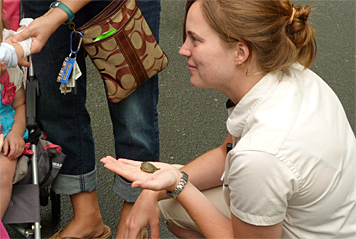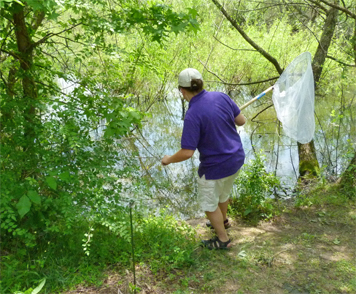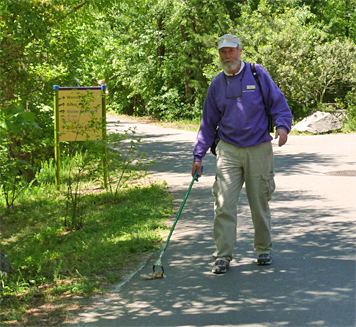When I first came aboard the Museum some 3 plus years ago there was a Ranger* on duty during the weekends only. The week days were covered by other members of the staff on an hourly basis on the outdoor exhibits loop** (different individuals from various departments would walk the loops for one hour during each of the Museum’s open hours).
Since then we have developed into a full time operation. When the Museum is open there’s a Ranger on duty. And, we have slowly evolved into a more professional group of Rangers who are not only ready to answer your questions about where to find the Red Wolves in their enclosure (or where the restrooms are) but to answer many of your questions about the local flora and fauna and give impromptu talks about that wildlife. We are constantly expanding our knowledge about the many wild creatures and plants that inhabit, or wander onto, the Museum grounds. Every day is a learning experience for us and we hope that it is for you too when you visit the Museum, because learning’s fun!
Here are our current Rangers:







So, if you see any of us out there when your strolling the outdoor areas of the Museum and you have a question about the flora and fauna that surrounds you (or you just want to know where the water fountain is), feel free to come up to any of us and ask away. If we don’t know the answer, we’ll most likely know where to find the answer.
Have fun out there!
* What is a Ranger at the Museum of Life + Science? Being a Ranger involves giving directions to Museum guests, checking on the status of the outdoor exhibits, interpreting the natural history of the flora and fauna at the Museum, doing small clean-ups around the outdoor areas, and generally, assisting the Museum guests in any way possible not only in the outdoor exhibit areas, but wherever assistance is needed (you’ve probably seen the happy faces of some of our Rangers in the parking lot cheerfully helping visitors, and the many field trip school buses, find safe places to park). And of course, it’s a Ranger who’s writing what you’re reading.
** The outdoor exhibits loop is the trail that includes Explore the Wild, Catch the Wind, the Dinosaur Trail , and sometimes the Farm Yard and Loblolly Park.
I have a new paddle for the boat Greg. Come see me since the one Sara is using looks in bad shape!
Good to have you aboard Erin!
Well Leslie, it is sort of an action shot. And, my pick-’em-up-stick is a multipurpose device, I can pick up critters with it, point with it, and kids are fascinated by it, they all want to know what it is, some of them even ask if they can try it out for themselves!!
Thanks Sherry, we could use another paddle, or two!
How did you, the person who knows the most about our flora and fauna, get a picture without an animal? At least change it to an action shot with your binocs or something! 🙂
Hooray for our rangers!
I’m really happy to be a part of the wonderful Ranger team! What a great job.